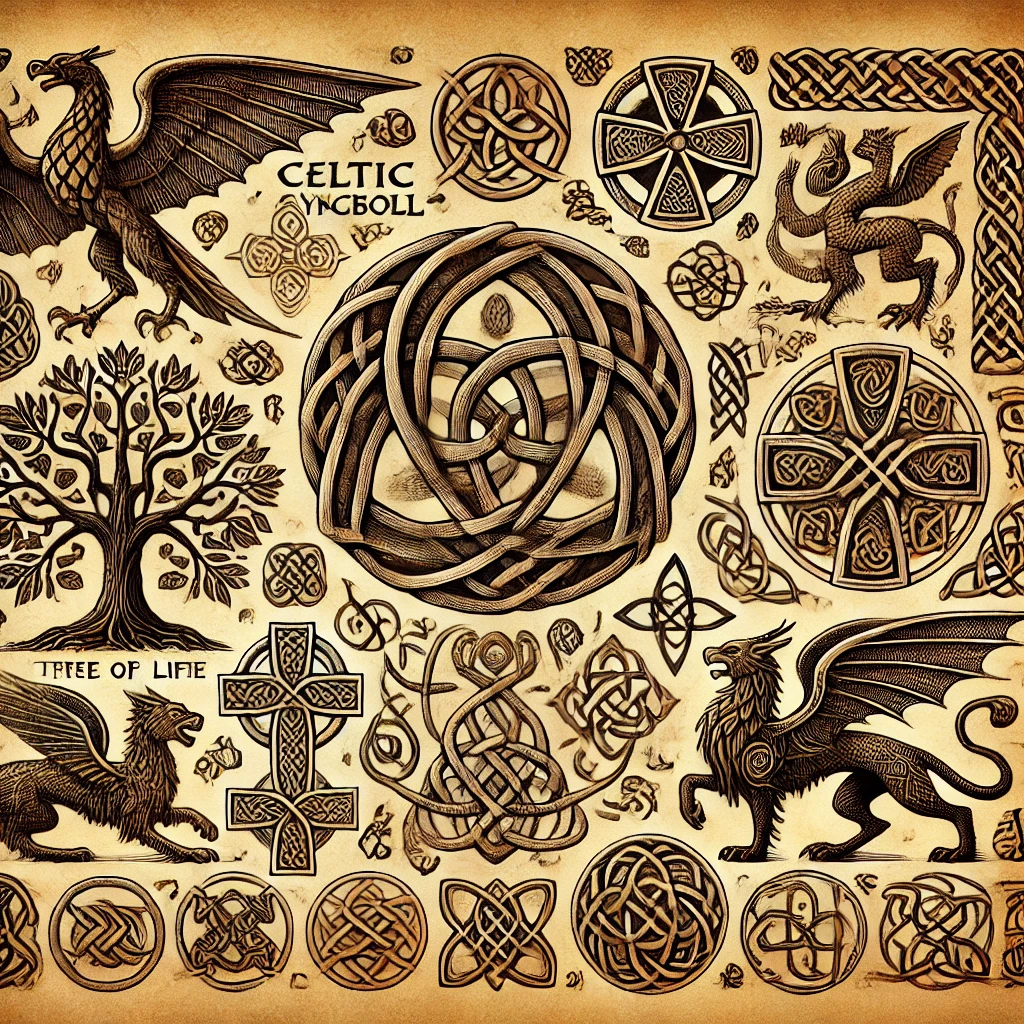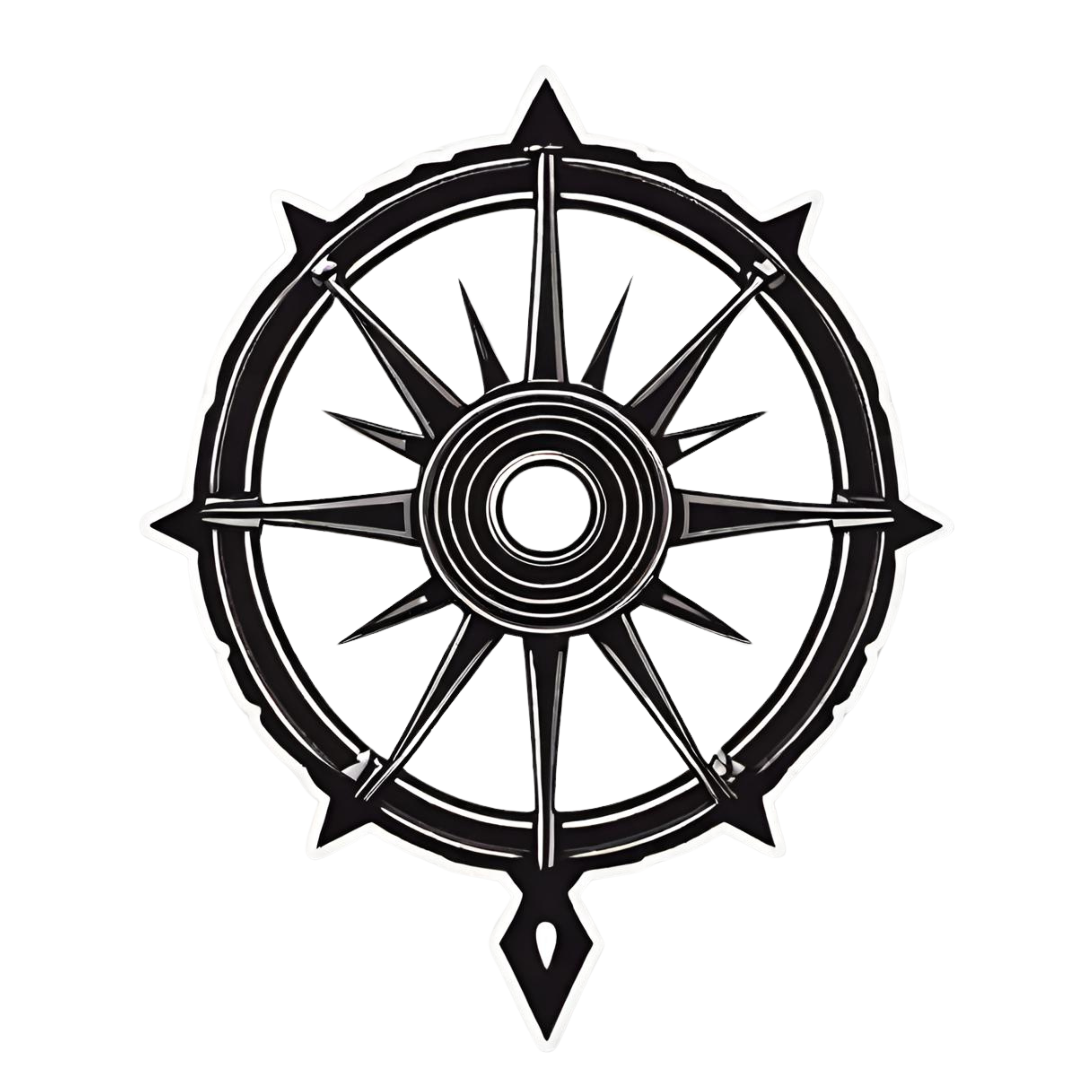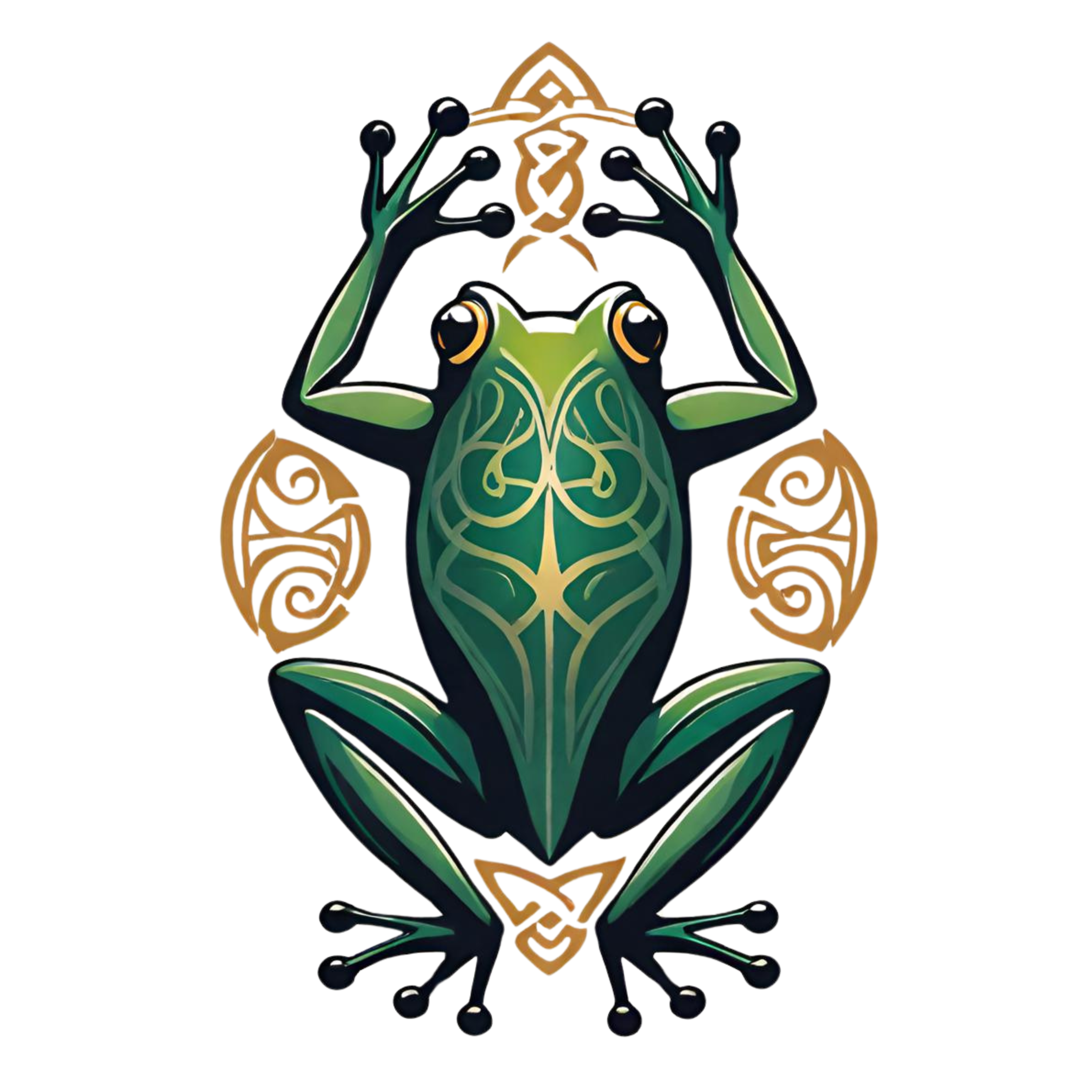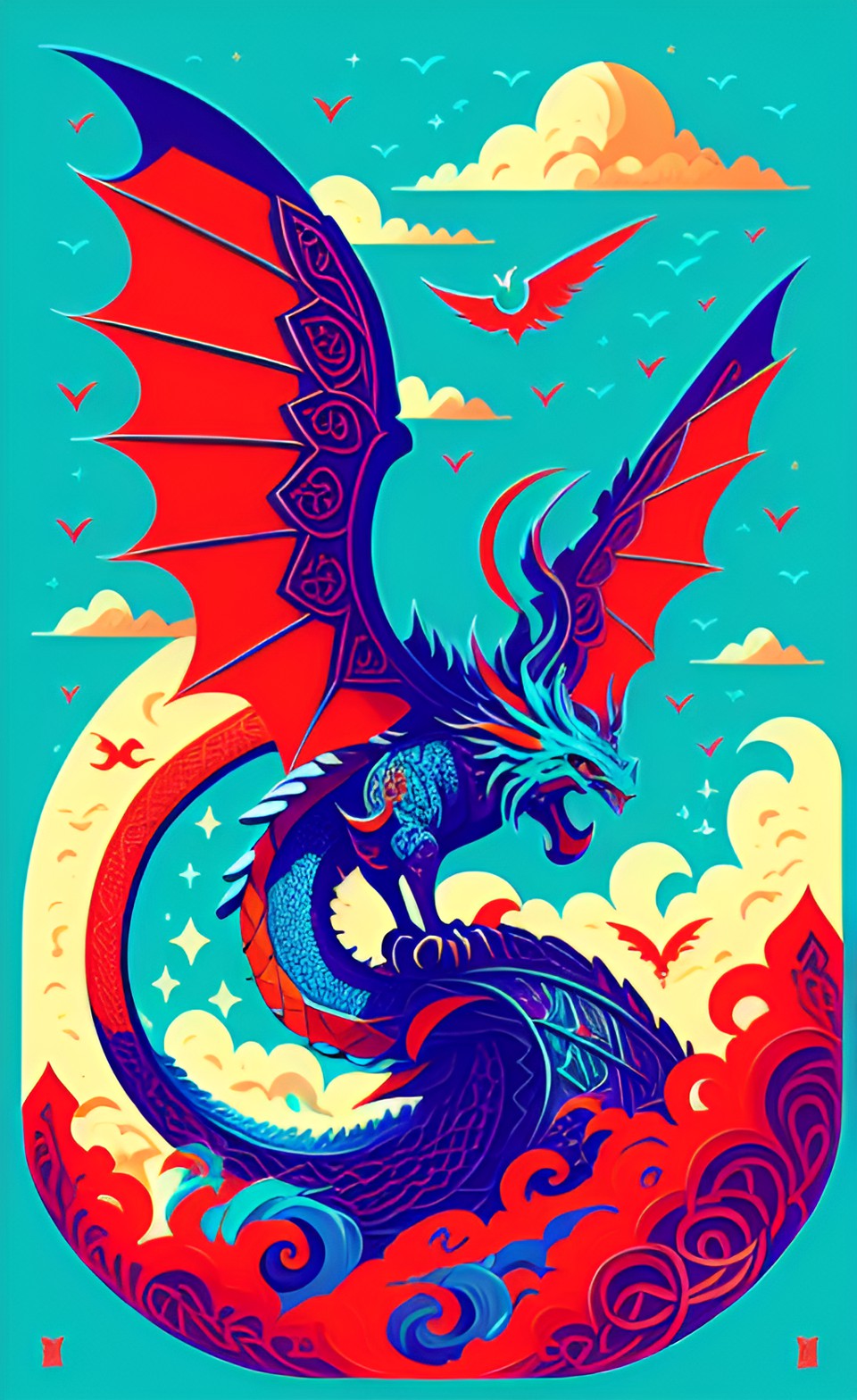
 Cailleach, Celtic winter goddess
Cailleach, Celtic winter goddess, reigns supreme over the coldest months, shaping the landscape with her icy touch and embodying the raw power of nature’s harshest season. This enigmatic figure, a cornerstone of
Celtic mythology, is far more than just a harbinger of frost and blizzards. Delving into her myths and legends reveals a multifaceted deity, shrouded in mystery and brimming with contradictions.
Winter for the Celts was not simply a period of dormancy and hardship, but a necessary part of the cyclical dance of life. The Cailleach, with her dominion over
winter mythology, embodies this duality. In some regions, she is depicted as a fearsome crone, wielding a staff that freezes the earth and herding deer across the desolate plains. Her weathered face and wild hair evoke the biting winds and stark beauty of a
winter landscape. Yet, in other narratives, the Cailleach undergoes a transformation – a youthful maiden symbolizing the promise of spring’s return. This fluidity between winter’s harshness and the promise of new life underscores the
Celtic understanding of nature’s cyclical nature.
Unveiling the Cailleach requires a journey across the diverse Celtic lands. In
Scotland, she is known as Beira, the
Queen of Winter, a powerful giantess who shapes the mountains with her bare hands. In
Ireland, she is the Cailleach Bheara, a fearsome hag who clashes with the goddess Brigid at the cusp of spring. Across the Isle of Man, she is known simply as the Cailleach, a figure who embodies both the destructive and creative forces of winter.
Celtic folklore creatures like the Cailleach go beyond mere stories. Her significance lies in the way she encapsulates the transformative power of winter and its vital role in the cycle of life. She is a harbinger of death, yes, but also of rebirth. The barren winter landscape, devoid of life on the surface, holds the potential for renewed growth come spring. The Cailleach, in this sense, becomes a symbol of resilience and the enduring power of nature to weather the harshest storms and emerge anew.
Modern paganism has witnessed a resurgence of interest in Celtic deities, and the Cailleach is no exception. Her image resonates with themes of aging, wisdom, and the transformative power of life’s darker seasons. Winter, often viewed with dread in modern society, becomes an opportunity for introspection and renewal through the lens of the Cailleach.
Who is the Cailleach in Celtic mythology? This exploration delves into her myths and symbolism to gain a deeper appreciation for the
Celtic worldview and how it interacted with the natural world. The Cailleach’s legacy serves as a reminder of the interconnectedness of life and death, hardship and renewal, a message that continues to hold relevance in our own times.
Cailleach artwork and representations are diverse. As we embark on this journey to
unveil the Cailleach, we will explore her various representations across Celtic regions, examine the myths and legends that have shaped her image, and discover the enduring significance she holds in
modern paganism. So, join us as we delve into the icy heart of
winter mythology and discover the multifaceted Cailleach, a figure who embodies both the harsh realities of winter and the promise of a vibrant spring to come.
Who is the Cailleach? Unveiling Her Many Faces
The
Cailleach (pronounced
KAH-lich), a captivating figure in
Celtic mythology, reigns supreme over the winter months. Yet, unveiling her true nature requires a journey across diverse Celtic regions, as her names, appearances, and even roles can vary. This enigmatic
Celtic winter goddess is far more than just a harbinger of frost. She is a multifaceted deity, shrouded in mystery and brimming with contradictions.
Across Celtic Lands: A Tale of Cailleach
In
Scotland, the Cailleach is known as
Beira, the formidable
Queen of Winter. Legends depict her as a giantess with wild white hair and icy blue skin. Beira is said to have shaped the very landscape with her bare hands, creating mountains and valleys during her fierce winter rampages. A fearsome figure wielding a bone staff that freezes the earth, she embodies the harsh realities of winter.
Ireland offers a different perspective. Here, the Cailleach is known as the
Cailleach Bheara, a powerful hag associated with the looming darkness of winter. Myths depict her as a solitary figure riding a wild white horse, wielding a magic staff that brings forth blizzards and icy winds. In some tales, she engages in a legendary battle with
Brigid, the goddess of spring, at the cusp of winter’s retreat. This clash between the Cailleach Bheara and Brigid symbolizes the cyclical nature of life and the inevitable transition from winter’s dormancy to spring’s renewal.
Wales offers a more nuanced portrayal. Here, the Cailleach is sometimes depicted as
Caw Lady Ddu (Black Old Woman), a crone associated with winter and darkness. However, there are also references to a younger, more benevolent aspect of the Cailleach, known as
Hingam, who embodies the promise of spring’s return. This duality reflects the
Celtic understanding of winter as a necessary time for introspection and renewal before the vibrant rebirth of spring.
Duality and Transformation: The Crone and the Maiden
The Cailleach’s most striking characteristic is her
dual nature. Often portrayed as a fearsome crone with a weathered face and wild hair, she embodies the harsh realities of winter – the biting winds, icy landscapes, and dormant earth. Yet, within this seemingly destructive force lies the potential for renewal. In some stories, the Cailleach undergoes a transformation – shedding her crone-like features to reveal a youthful maiden symbolizing the promise of spring’s return. This transformation underscores the
Celtic belief in the cyclical nature of life, death, and rebirth.
Myths and Legends: Shaping the Winter Season
Myths and legends surrounding the Cailleach highlight her role in shaping the winter season. In Scottish folklore, the Cailleach is said to
“strike the land three times” with her staff, bringing forth the first frost, the deep freeze of midwinter, and the final thaw before spring. Irish legends depict her as a figure who determines the length and severity of winter. If the Cailleach is in a good mood, winter may be mild. However, if she is displeased, she may unleash a harsh and unforgiving season.
A captivating legend from Scotland tells the story of the Cailleach and the New Year. It is said that the Cailleach is young and beautiful on New Year’s Day, gradually growing older and weaker as the year progresses. By the time winter arrives, she has become a frail old woman. This narrative reinforces the cyclical nature of time and the inevitable transition from youth to old age, mirroring the seasons themselves.
Unveiling the Cailleach: Beyond Folklore
Understanding the Cailleach goes beyond mere
Celtic folklore creatures. Her significance lies in the way she encapsulates the transformative power of winter and its vital role in the cycle of life. She is a harbinger of death, yes, but also of rebirth. The barren winter landscape, devoid of life on the surface, holds the potential for renewed growth come spring. The Cailleach, in this sense, becomes a powerful symbol of resilience and the enduring power of nature to weather the harshest storms and emerge anew.
Beyond the Broomstick: Unveiling the Cailleach’s Significance
The Cailleach transcends the image of a winter crone wielding a broomstick. Her true significance lies in her profound connection to the natural world, the cycle of life and death, and the ever-changing seasons. Understanding the Cailleach goes beyond mere
Celtic folklore – she is a powerful symbol with enduring relevance in our own times.
Rooted in Nature’s Cycle: The Cailleach and the Wheel of Life
The Cailleach is deeply intertwined with the natural world and the
cycle of life and death. Winter, in the
Celtic worldview, was not simply a period of dormancy and hardship, but a necessary part of nature’s grand tapestry. The Cailleach, as the embodiment of winter, represents the transformative power of this season. The seemingly barren winter landscape, devoid of visible life on the surface, holds the potential for renewed growth come spring. The Cailleach, therefore, becomes a symbol of resilience and the enduring power of nature to weather the harshest storms and emerge anew.
Fertility’s Hidden Face: The Cailleach and the Changing Seasons
While often associated with winter’s harshness, the Cailleach also holds a surprising connection to
fertility. In some Celtic traditions, she is seen as a guardian of the land, ensuring its fertility by allowing it to rest and rejuvenate during winter. Her association with the staff, often depicted in myths, could symbolize not just a tool to bring frost, but also a means to stir the earth and prepare it for future growth.
Myths portray the Cailleach as a protector of animals during the harsh winter months, particularly deer. This nurturing aspect, coupled with her association with the land’s fertility, paints a more nuanced picture of the Cailleach – a deity who represents not just winter’s destructive power, but also the potential for renewal and future bounty.
The Cailleach and Celtic Festivals: Echoes of Winter’s Power
The Cailleach’s influence is evident in various
Celtic festivals. In
Samhain (Halloween), the traditional Celtic new year aligning with the end of harvest and the beginning of winter, the Cailleach is sometimes seen as a harbinger of the darker months. Offerings and rituals might be performed to appease her and ensure a mild winter.
Imbolc (Brigid’s Day), a festival marking the beginning of spring, often holds echoes of the Cailleach’s duality. While Brigid embodies the light and warmth of spring, some traditions might acknowledge the Cailleach as a symbolic force gradually withdrawing, making way for the new season’s resurgence.
Modern Connections: The Enduring Legacy of the Cailleach
The Cailleach’s significance extends far beyond the realm of
Celtic mythology. In
modern paganism, there has been a resurgence of interest in Celtic deities, and the Cailleach is no exception. Her image resonates with themes of aging, wisdom, and the transformative power of life’s darker seasons. Winter, often viewed with dread in modern society, becomes an opportunity for introspection and renewal through the lens of the Cailleach.
Environmental awareness has also heightened the appreciation for the Cailleach’s role in the natural world. Her association with the cyclical nature of life and the importance of dormancy for future growth resonates with modern concerns about sustainability and ecological balance. The Cailleach serves as a reminder of the interconnectedness of life and the necessity of respecting the natural rhythms of the earth.
Artistic representations of the Cailleach continue to inspire artists and storytellers. From paintings and sculptures depicting her fierce crone aspect to modern interpretations exploring her transformative power, the Cailleach remains a source of creativity and intrigue.
By delving deeper into the Cailleach’s
meaning and symbolism (as highlighted in previous sections), we gain a deeper appreciation for the
Celtic worldview and how it interacted with the natural world. Her legacy serves as a reminder of the interconnectedness of life and death, hardship and renewal, a message that continues to hold relevance in our own times.
The Cailleach’s Legacy: A Winter Crone for Our Times
The Cailleach’s influence transcends the mists of time. Her legacy endures in
modern culture and
pagan traditions, offering valuable insights for navigating life’s own cycles and seasons. By delving into her multifaceted nature, we discover a figure far richer than just a harbinger of winter.
A Crone for Our Times: Finding Wisdom in Winter’s Embrace
In a world that often glorifies youth and vitality, the Cailleach, with her image of the winter crone, offers a powerful counterpoint. Her weathered face and wild hair symbolize the wisdom and strength that come with age. In
modern paganism, the Cailleach is revered as a figure of introspection and self-knowledge. Her association with winter becomes a metaphor for life’s inevitable “dark nights of the soul” – periods of hardship and introspection that ultimately lead to growth and renewal.
Furthermore, the Cailleach’s ability to navigate the harsh realities of winter reminds us of the importance of resilience in the face of adversity. Just as the Cailleach endures the harshest storms and emerges renewed, we too can find strength and wisdom by confronting life’s challenges head-on.
Transformative Power: Embracing Winter’s Lessons
Winter, often viewed with dread in modern society, becomes a powerful metaphor for transformation through the lens of the Cailleach. Her image reminds us that periods of dormancy and introspection are crucial for growth. Just as the earth rests beneath the winter snow, preparing for spring’s vibrant return, so too can we utilize winter’s quietude for reflection and renewal. By embracing the lessons of winter, we can emerge from challenging times stronger and more prepared for the opportunities that lie ahead.
Beyond the Broomstick: A Complex and Multifaceted Figure
It’s important to appreciate the Cailleach not just as a symbol of winter’s harshness, but as a complex and multifaceted figure. Her dual nature – the crone and the maiden – embodies the cyclical rhythm of life and death, decay and rebirth. She is a protector of the natural world, ensuring its fertility by allowing it to rest during winter. The Cailleach’s legacy encourages us to find beauty and wisdom even in nature’s harshest seasons.
Many
Cailleach artwork and representations (as mentioned earlier) capture this multifaceted nature. From depictions emphasizing her fierce, crone-like aspect to artistic interpretations exploring her transformative power, the Cailleach continues to be a source of inspiration for artists and storytellers.
Unveiling a Timeless Legacy
The Cailleach’s legacy extends far beyond the realm of
Celtic winter mythology. Her image offers valuable lessons for navigating life’s own cycles and seasons. By embracing the wisdom of the winter crone, we can find strength in adversity, embrace transformative power during life’s “dark nights,” and appreciate the interconnectedness of life and death, hardship and renewal. So, the next time you encounter winter’s chill, remember the Cailleach – not just as a symbol of the season, but as a multifaceted figure who embodies resilience, wisdom, and the transformative power that lies dormant within us all.
Conclusion: Unveiling the Cailleach’s Enduring Legacy
Our exploration of the Cailleach has unveiled a captivating figure in
Celtic mythology, far more than just a harbinger of winter. We’ve delved into her various names and representations across
Celtic regions, from the fearsome Queen of Winter, Beira, to the Cailleach Bheara, a powerful hag clashing with spring. We’ve explored her
dual nature – a crone associated with winter’s harshness and a youthful maiden symbolizing spring’s rebirth. Myths and legends reveal her role in shaping the winter season, from striking the land with frost to influencing its severity.
The Cailleach’s significance extends beyond mere
Celtic folklore creatures. Her connection to the natural world and the
cycle of life and death underscores the cyclical nature of life. Her association with
fertility highlights the importance of dormancy for future growth. We’ve seen how the Cailleach’s legacy persists in
modern paganism, where she embodies introspection and the transformative power of life’s darker seasons.
Cailleach artwork and representations continue to inspire artists, showcasing her multifaceted nature. The Cailleach’s enduring legacy reminds us of the interconnectedness of life and death, hardship and renewal, a message that holds relevance in our own times.
A Final Thought: The Cailleach’s Enduring Enigma
As we conclude this exploration, a thought-provoking question lingers: What is the true nature of the Cailleach? Is she solely a harbinger of winter, or does her multifaceted image offer a deeper reflection of life’s cyclical journey? Perhaps the answer lies in embracing both aspects. The Cailleach, with her transformative power, reminds us that even in the harshest winters, the potential for renewal and rebirth lies dormant, waiting to be awakened.
By understanding the Cailleach and her enduring legacy, we gain a deeper appreciation for the
Celtic worldview and its profound connection to nature’s rhythms. This enigmatic figure continues to inspire reflection and contemplation, prompting us to embrace the transformative power that lies within even the darkest of times. So, the next time you encounter winter, remember the Cailleach, not just as a symbol of the season, but as a powerful reminder of life’s enduring cyclical nature.

 Triquetra (Trinity Knot)
Triquetra (Trinity Knot) Tree of Life (Crann Bethadh)
Tree of Life (Crann Bethadh)
 Cross of St. Brigid
Cross of St. Brigid Triskele (Triple Spiral)
Triskele (Triple Spiral) Celtic Spiral
Celtic Spiral Claddagh
Claddagh Shamrock
Shamrock Wheel of Taranis
Wheel of Taranis Awen
Awen Five-Fold Symbol
Five-Fold Symbol Celtic Knot
Celtic Knot Dara Celtic Knot
Dara Celtic Knot Quaternary Celtic Knot
Quaternary Celtic Knot Sailor’s Knot
Sailor’s Knot Bowen Knot
Bowen Knot Celtic Motherhood Knot
Celtic Motherhood Knot Solomon’s Knot
Solomon’s Knot Eternity Knot
Eternity Knot Serpents
Serpents Horses
Horses Hounds
Hounds Birds
Birds Deer
Deer Salmon
Salmon Griffin
Griffin Dragon
Dragon Bull
Bull
 Hare
Hare


 Triquetra (Trinity Knot)
Triquetra (Trinity Knot) Tree of Life (Crann Bethadh)
Tree of Life (Crann Bethadh) Cross of St. Brigid
Cross of St. Brigid Triskele (Triple Spiral)
Triskele (Triple Spiral) Celtic Spiral
Celtic Spiral Claddagh
Claddagh Shamrock
Shamrock Wheel of Taranis
Wheel of Taranis Awen
Awen Five-Fold Symbol
Five-Fold Symbol Celtic Knot
Celtic Knot Dara Celtic Knot
Dara Celtic Knot Quaternary Celtic Knot
Quaternary Celtic Knot Sailor’s Knot
Sailor’s Knot Bowen Knot
Bowen Knot Celtic Motherhood Knot
Celtic Motherhood Knot Solomon’s Knot
Solomon’s Knot Eternity Knot
Eternity Knot Serpents
Serpents Horses
Horses Hounds
Hounds Birds
Birds Deer
Deer Salmon
Salmon Griffin
Griffin Dragon
Dragon Bull
Bull Hare
Hare







 Cailleach, Celtic winter goddess, reigns supreme over the coldest months, shaping the landscape with her icy touch and embodying the raw power of nature’s harshest season. This enigmatic figure, a cornerstone of Celtic mythology, is far more than just a harbinger of frost and blizzards. Delving into her myths and legends reveals a multifaceted deity, shrouded in mystery and brimming with contradictions.
Winter for the Celts was not simply a period of dormancy and hardship, but a necessary part of the cyclical dance of life. The Cailleach, with her dominion over winter mythology, embodies this duality. In some regions, she is depicted as a fearsome crone, wielding a staff that freezes the earth and herding deer across the desolate plains. Her weathered face and wild hair evoke the biting winds and stark beauty of a winter landscape. Yet, in other narratives, the Cailleach undergoes a transformation – a youthful maiden symbolizing the promise of spring’s return. This fluidity between winter’s harshness and the promise of new life underscores the Celtic understanding of nature’s cyclical nature.
Unveiling the Cailleach requires a journey across the diverse Celtic lands. In Scotland, she is known as Beira, the Queen of Winter, a powerful giantess who shapes the mountains with her bare hands. In Ireland, she is the Cailleach Bheara, a fearsome hag who clashes with the goddess Brigid at the cusp of spring. Across the Isle of Man, she is known simply as the Cailleach, a figure who embodies both the destructive and creative forces of winter.
Celtic folklore creatures like the Cailleach go beyond mere stories. Her significance lies in the way she encapsulates the transformative power of winter and its vital role in the cycle of life. She is a harbinger of death, yes, but also of rebirth. The barren winter landscape, devoid of life on the surface, holds the potential for renewed growth come spring. The Cailleach, in this sense, becomes a symbol of resilience and the enduring power of nature to weather the harshest storms and emerge anew.
Modern paganism has witnessed a resurgence of interest in Celtic deities, and the Cailleach is no exception. Her image resonates with themes of aging, wisdom, and the transformative power of life’s darker seasons. Winter, often viewed with dread in modern society, becomes an opportunity for introspection and renewal through the lens of the Cailleach.
Who is the Cailleach in Celtic mythology? This exploration delves into her myths and symbolism to gain a deeper appreciation for the Celtic worldview and how it interacted with the natural world. The Cailleach’s legacy serves as a reminder of the interconnectedness of life and death, hardship and renewal, a message that continues to hold relevance in our own times.
Cailleach artwork and representations are diverse. As we embark on this journey to unveil the Cailleach, we will explore her various representations across Celtic regions, examine the myths and legends that have shaped her image, and discover the enduring significance she holds in modern paganism. So, join us as we delve into the icy heart of winter mythology and discover the multifaceted Cailleach, a figure who embodies both the harsh realities of winter and the promise of a vibrant spring to come.
Cailleach, Celtic winter goddess, reigns supreme over the coldest months, shaping the landscape with her icy touch and embodying the raw power of nature’s harshest season. This enigmatic figure, a cornerstone of Celtic mythology, is far more than just a harbinger of frost and blizzards. Delving into her myths and legends reveals a multifaceted deity, shrouded in mystery and brimming with contradictions.
Winter for the Celts was not simply a period of dormancy and hardship, but a necessary part of the cyclical dance of life. The Cailleach, with her dominion over winter mythology, embodies this duality. In some regions, she is depicted as a fearsome crone, wielding a staff that freezes the earth and herding deer across the desolate plains. Her weathered face and wild hair evoke the biting winds and stark beauty of a winter landscape. Yet, in other narratives, the Cailleach undergoes a transformation – a youthful maiden symbolizing the promise of spring’s return. This fluidity between winter’s harshness and the promise of new life underscores the Celtic understanding of nature’s cyclical nature.
Unveiling the Cailleach requires a journey across the diverse Celtic lands. In Scotland, she is known as Beira, the Queen of Winter, a powerful giantess who shapes the mountains with her bare hands. In Ireland, she is the Cailleach Bheara, a fearsome hag who clashes with the goddess Brigid at the cusp of spring. Across the Isle of Man, she is known simply as the Cailleach, a figure who embodies both the destructive and creative forces of winter.
Celtic folklore creatures like the Cailleach go beyond mere stories. Her significance lies in the way she encapsulates the transformative power of winter and its vital role in the cycle of life. She is a harbinger of death, yes, but also of rebirth. The barren winter landscape, devoid of life on the surface, holds the potential for renewed growth come spring. The Cailleach, in this sense, becomes a symbol of resilience and the enduring power of nature to weather the harshest storms and emerge anew.
Modern paganism has witnessed a resurgence of interest in Celtic deities, and the Cailleach is no exception. Her image resonates with themes of aging, wisdom, and the transformative power of life’s darker seasons. Winter, often viewed with dread in modern society, becomes an opportunity for introspection and renewal through the lens of the Cailleach.
Who is the Cailleach in Celtic mythology? This exploration delves into her myths and symbolism to gain a deeper appreciation for the Celtic worldview and how it interacted with the natural world. The Cailleach’s legacy serves as a reminder of the interconnectedness of life and death, hardship and renewal, a message that continues to hold relevance in our own times.
Cailleach artwork and representations are diverse. As we embark on this journey to unveil the Cailleach, we will explore her various representations across Celtic regions, examine the myths and legends that have shaped her image, and discover the enduring significance she holds in modern paganism. So, join us as we delve into the icy heart of winter mythology and discover the multifaceted Cailleach, a figure who embodies both the harsh realities of winter and the promise of a vibrant spring to come.














